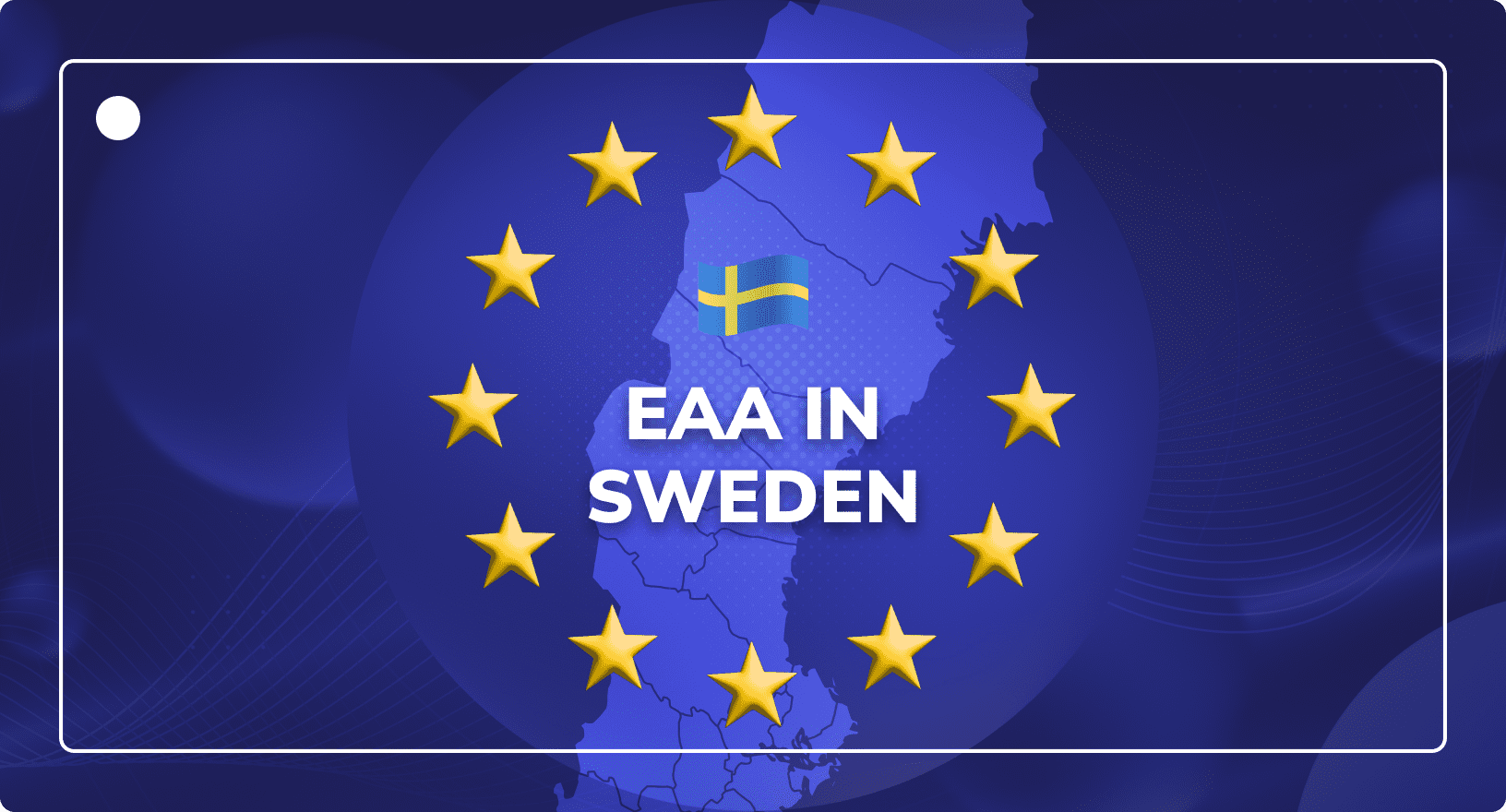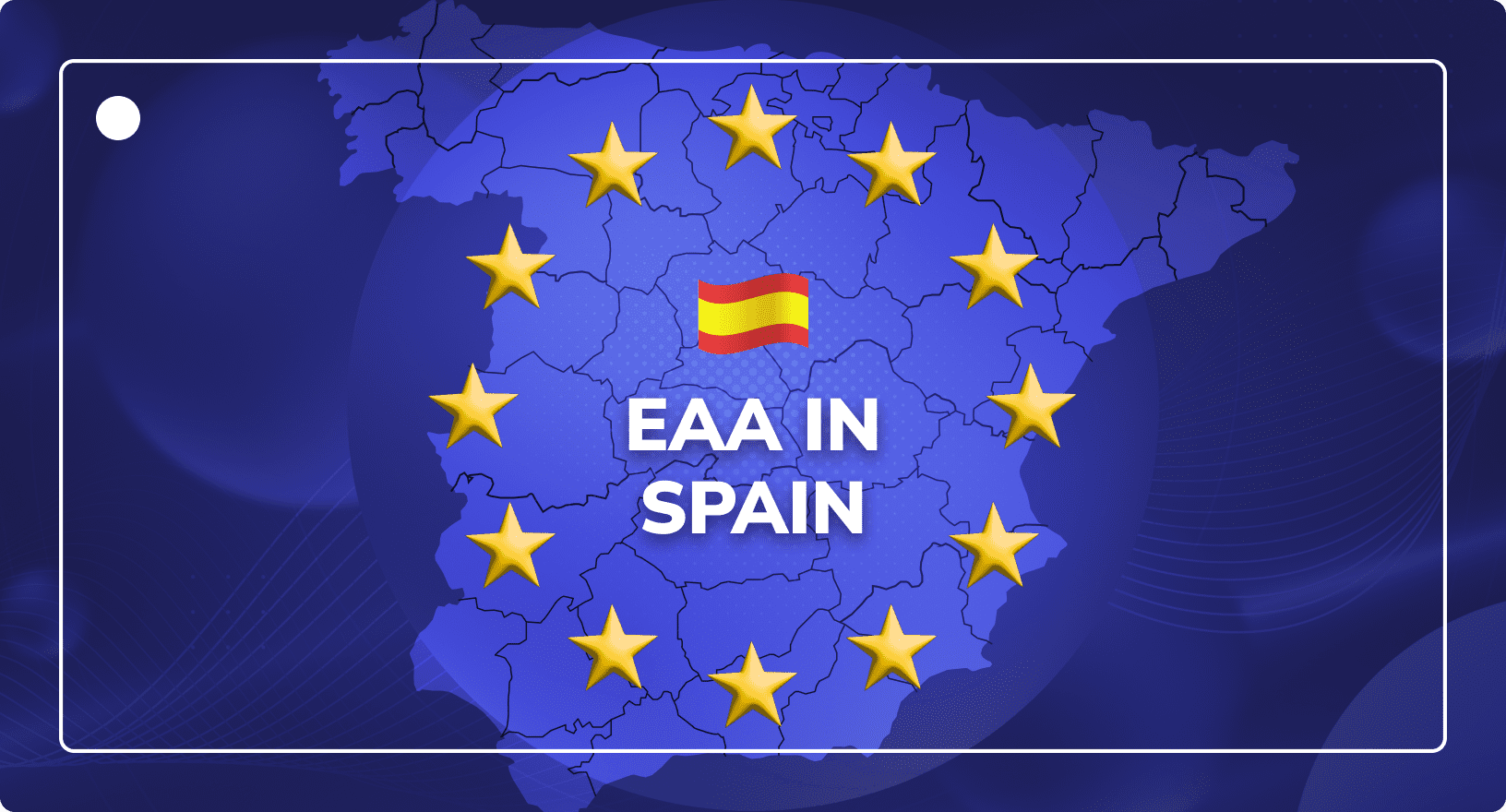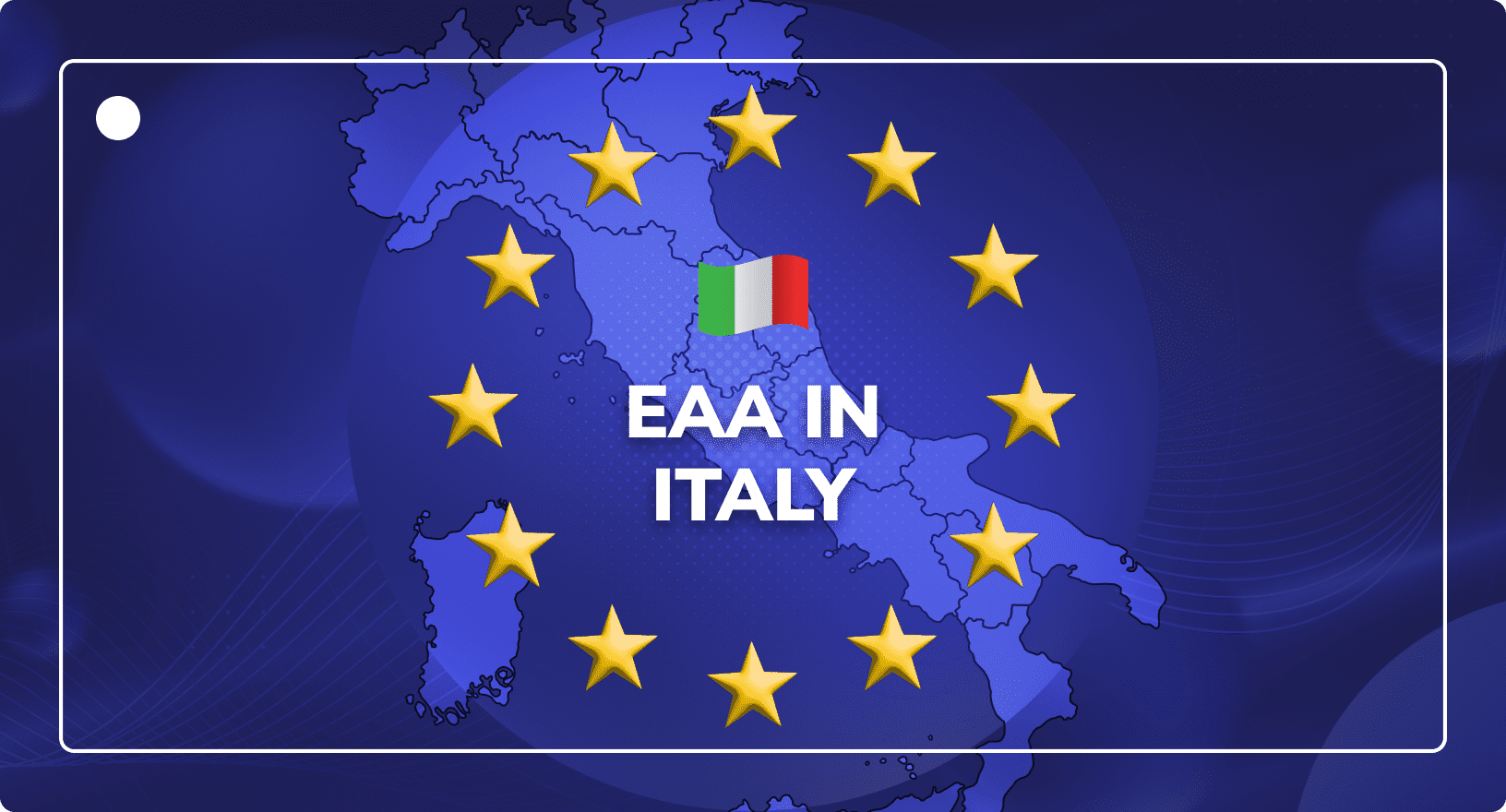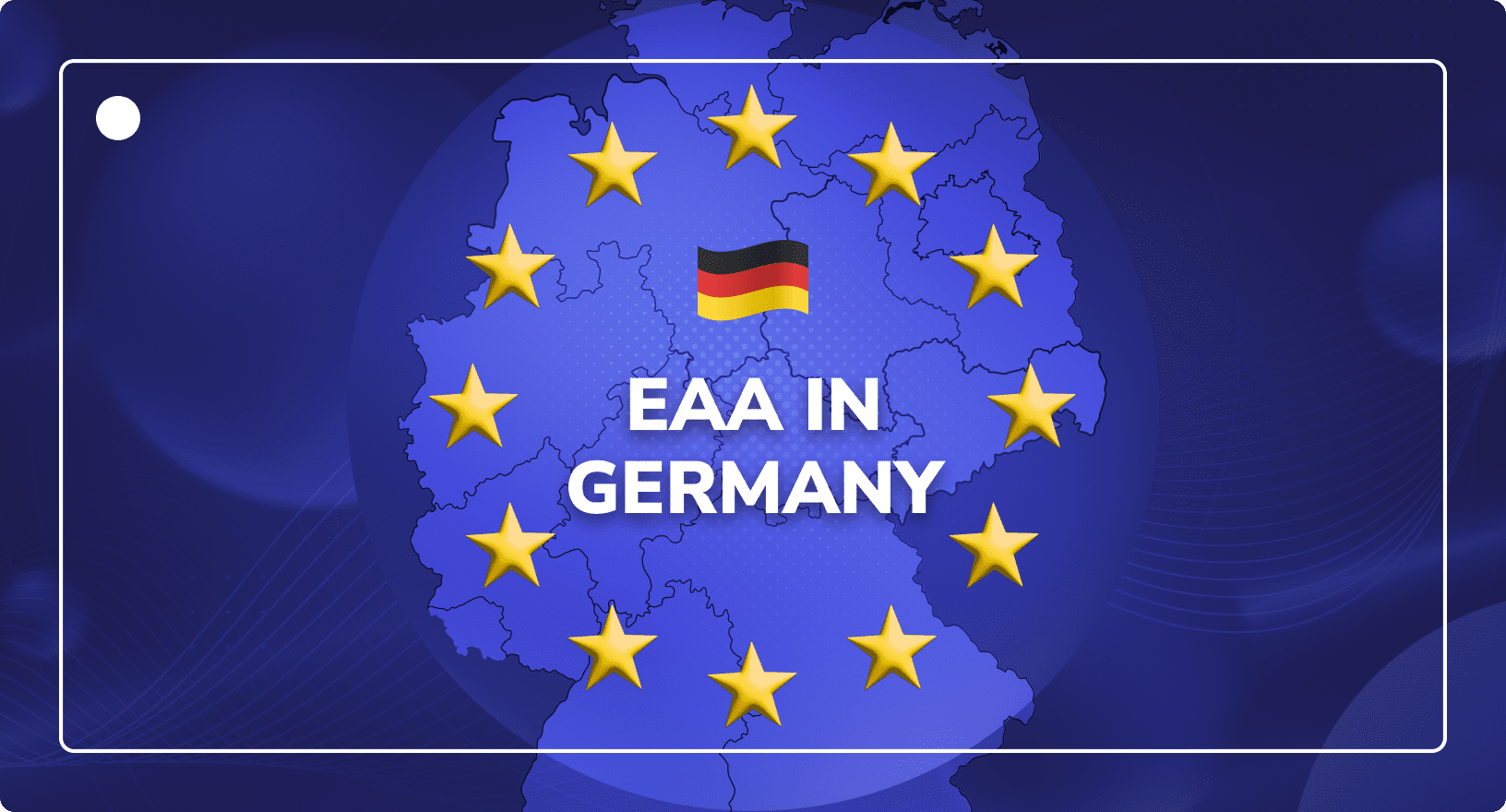How to Choose a Digital Asset Management System? Tips, Tricks, & Key Information
Digital Asset Management
Updated on February 17, 2025
Choosing a digital asset management (DAM) system is a crucial decision for businesses. There are many factors you need to consider, and the correct choice enables you to leverage efficiencies on a scalable level.
This article covers how to choose a digital asset management system, including how to outline your digital asset management requirements, evaluating DAM providers, and the implementation and adoption of a DAM system.
Understanding Digital Asset Management Systems
If you want to compare DAM systems, you need to have more than a surface level understanding of what digital asset management is. This will help you better understand the practical benefits and apply them to your own business.
You will also be introduced to two types of DAM systems. Decide for yourself which version best suits your company.
What is a Digital Asset Management System?
A Digital Asset Management system helps you structure and manage all your business’s digital content. The software solution enables the storage of and central access to all digital files.
These so-called digital assets include not only images, videos, and audio files, but also graphics and other documents like PDFs, MS Word files, or any other document type.
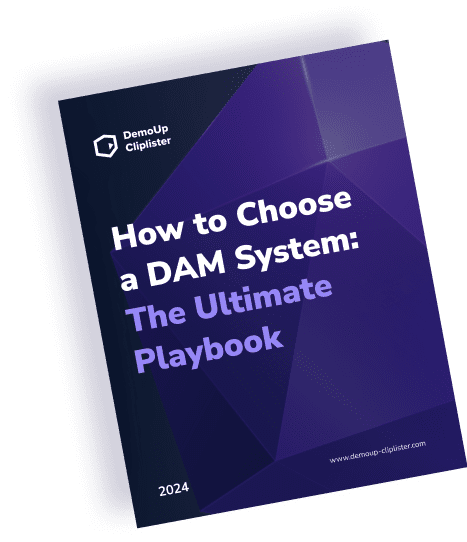
Need to Choose a DAM System? Download Our Free Playbook!
Download Free NowDemoUp Cliplister’s DAM, for instance, helps you organise, store, and distribute all your content through sharable links. Plus, it easily integrates into your existing workflows, helping you streamline your content management processes.
Benefits of Using a DAM System
One of the key benefits of using a DAM system is the uncomplicated creation of shared content. Compared to standard cloud storage, the best DAM software can also handle significantly larger amounts of data.
Unified management also ensures that the files ingested are always up-to-date. A clean category structure makes it easy to find them and format them appropriately depending on the output channel.
Do You Need Digital Asset Management Software?
If your teams deal with a significant volume of digital assets, requires efficient organisation, retrieval, and collaboration, and values streamlined workflows, then investing in Digital Asset Management (DAM) software is highly beneficial.
These are the main reasons why digital asset management is crucial today’s eCommerce marketing world.
DAM streamlines asset organisation, making it easier to categorise, search, and retrieve files. The software’s metadata management ensures detailed asset descriptions, enhancing search accuracy.
If you lack this type of existing infrastructure for your various marketing assets and resources, your teams may spend too long just looking for the relevant assets to work on. Plus, your brand consistency will suffer and your marketing team will be inefficient.
Collaboration is facilitated through features like version control and workflow automation, optimising team efficiency. Access controls secure assets, controlling access and preventing unauthorised use while making file sharing easy between internal and external stakeholders.
As the number of your digital assets grows, your DAM solution must scale to accommodate increasing volumes, offering flexibility. Integration with other tools enhances overall workflow, and analytics provide valuable insights into asset performance.
Ultimately, DAM software is an invaluable asset for any company or marketing team prioritising efficient, secure, and collaborative creative workflows between key stakeholders. This makes DAM tools an important part of achieving business objectives.
The only digital asset management solution
connecting brands with 500+ retailers globally.
Types of DAM Systems
DAM systems can be deployed either locally, i.e., as an on-premise solution, or cloud-based. However, on-premises DAMs are somewhat outdated for most businesses and require a lot of maintenance.
With a SaaS-based or cloud DAM, you can gain access to the system regardless of location, a feature that’s even more important in today’s post-COVID work environment. Your entire organisation will be up-to-date and avoid working on irrelevant assets.
Additionally, there are several specialised DAM System types worth knowing about. Depending on the type of work you do, some may be more important for your brand management than others. They are as follows:
- Digital Asset Management (DAM):
- Centralised storage and organisation of digital assets.
- Metadata management for efficient search and retrieval.
- Workflow automation and version control for collaborative asset management.
- Video Asset Management:
- VAM software focuses on the unique needs of video content.
- Supports video file formats, resolutions, and specific metadata for video assets.
- Features for video editing, transcoding, and thumbnail generation.
- Media Asset Management (MAM):
- MAM systems handle a broad range of rich media, including images, audio, and video.
- Specialised tools for cataloging, editing, and distributing various media types.
- Customisable workflows for handling diverse media assets.
- Brand Asset Management (BAM):
- Focuses on preserving and managing brand assets like logos, style guides, and marketing collateral.
- Ensures brand consistency across different channels and campaigns.
- Includes tools for brand managers to ensure brand compliance and approval workflows.
- Document Asset Management:
- Specialised DAM for managing and organising documents.
- Supports version control, access permissions, and document-centric workflows.
- Ideal for businesses dealing with large volumes of text-based content.
Understanding these specialised DAM system types enables businesses to choose the right solution tailored to their specific digital asset management needs.
Digital Asset Management Requirements
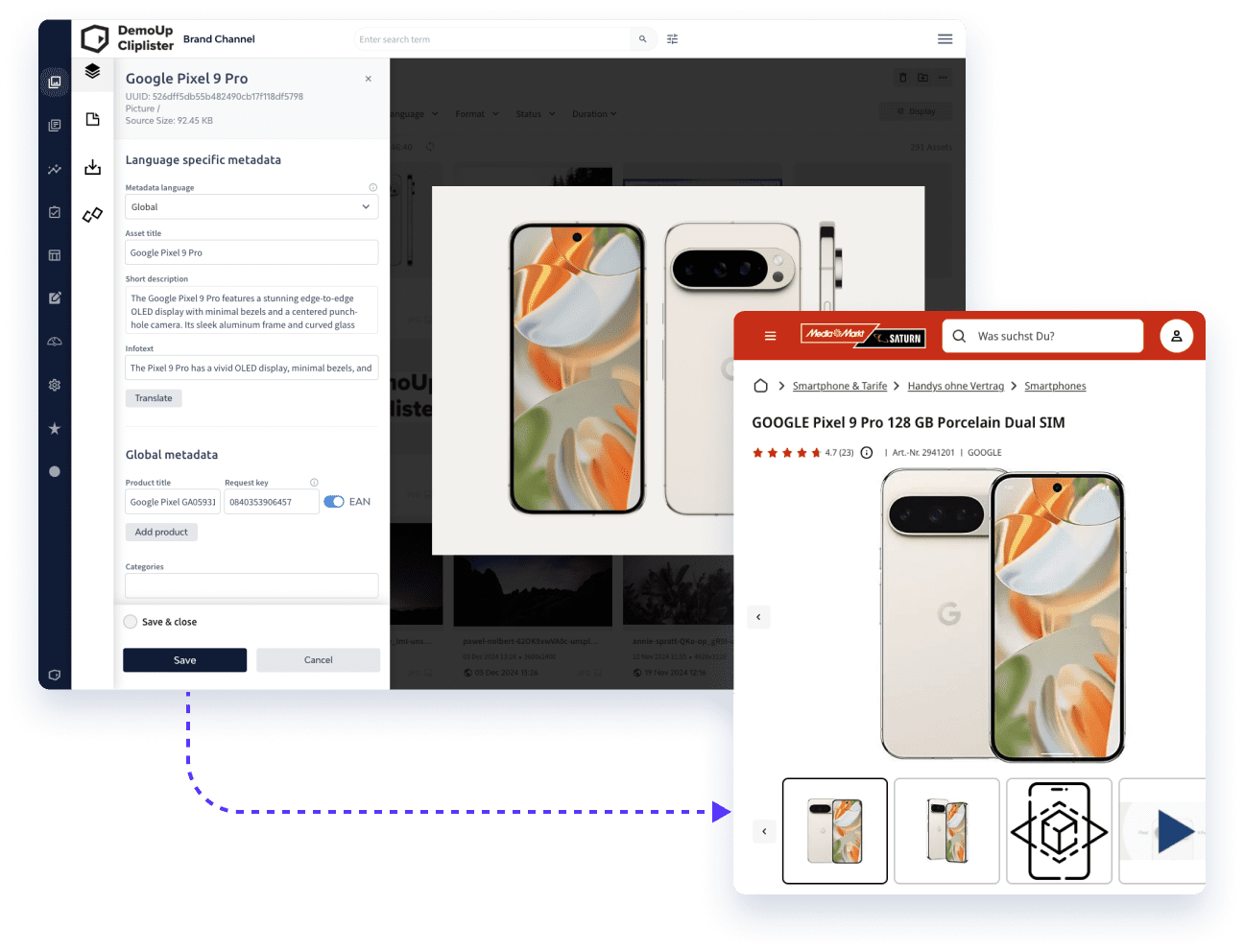
While there are loads of articles about the “best digital asset management system“, and “how to choose a digital asset management system”, the truth is that the answer is subjective because it depends on your company.
Digital asset management requirements are individual and depend on the workflows and DAM processes within your company. The following sections cover the most important factors to consider when comparing DAM providers.
Key Factors to Consider When Choosing a DAM System
Figuring out what you need from your DAM is the most important part of the selection process. Finding the best DAM software is crucial in driving your organisation’s long-term success and builds brand integrity.
Many companies implement custom digital asset management workflows and processes. Other relevant factors lie in the content of the traditional marketing mix, like how you ensure brand control, legal compliance, and operational efficiency.
Outlining Your Digital Asset Management Requirements
Before you begin comparing DAM providers, you should break down your requirements into the areas most important to your business. Here is a list of factors you should start with:
- Your organisation’s needs and goals
- The types of digital assets you need to manage
- The size and complexity of your digital asset library
- Your team’s workflows and processes
- Integration with other tools and systems
- Security and permissions
- Pricing and budget considerations
- Do you need any integrations (i.e., with your PIM System)?
Formulating stakeholder requirements within your organisation should be the first step in choosing a new DAM system. This ensures that you analyse the impact to every area of the company and that your entire organisation benefits from using the system.
Considering Existing Digital Asset Management Workflows
When choosing a DAM system, it’s crucial to consider existing digital asset management workflows. Analyse current processes, identify pain points, and prioritise features aligning with your specific digital asset management workflows.
This ensures seamless implementation, enhanced efficiency, and a tailored enterprise solution that optimises productivity and collaboration.
What is a Digital Asset Management Workflow?
A digital asset management workflow outlines the end-to-end process of creating, organising, storing, retrieving, and distributing digital assets. It ensures seamless collaboration among teams, streamlining the entire asset lifecycle.
From initial creation to final distribution, a well-defined DAM workflow enhances efficiency, facilitates version control, and optimises asset utilisation by not only marketing teams, but all key stakeholders.
It involves metadata tagging, video management, content approval processes, and often integrates with project management tools, creating a centralised hub for managing and maximising the value of digital content and approved assets within an organisation.
This includes marketing materials, rich media, creative files, video files, and other file formats. At the end of the day, a DAM solution’s workflow can help your marketing teams and other business partners achieve operational efficiency and consistency in all digital files.
Evaluating DAM System Providers
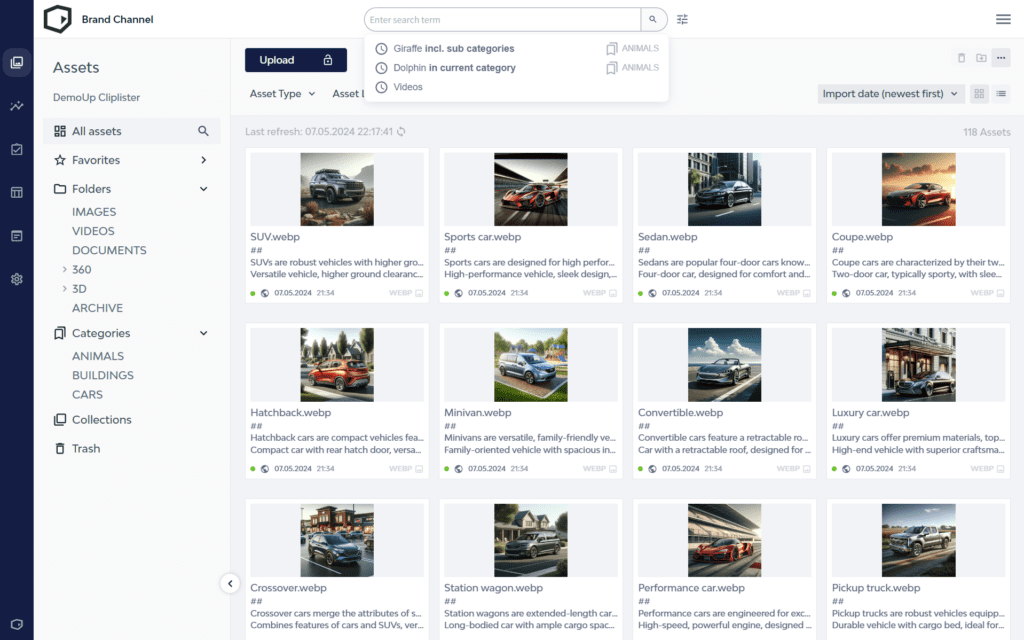
The range of various DAM solutions is steadily growing. Therefore, you should formulate your evaluation based on five important criteria.
To begin with, review the functions and capabilities of various DAM systems. This will give you an impression of their features. Also, compare customer service and support, as well as your own user experience.
Another important criterion is client satisfaction, which you can better understand by evaluating customer reviews. Despite their subjective nature, this is one area you should not overlook.
Naturally, price is always going to be an important factor when evaluating evaulating digital asset management solutions. It is, therefore, very important to compare various plans and prices.
In most cases, however, a lower price is accompanied by worse performance. “You get what you pay for” rings especially true with digital asset management systems.
Review Digital Asset Management Functions and Capabilities
The central digital asset management software functions refer specifically to a DAM system’s capabilities.
To successfully incorporate suitable DAM software, it is important to conduct a detailed review of the respective features different vendors build into their DAM systems.
Possible digital asset management system functions to evaluate are the speed, compatibility, and applications of the approved assets and software. These should be reviewed on how they enable your company to achieve both digital content goals and brand consistency.
Common DAM Functions
Digital asset management software typically performs common functions such as:
- Asset Organisation: Efficiently categorising and structuring digital assets for easy retrieval.
- Metadata Management: Adding and managing descriptive information to enhance search and categorisation.
- Search and Retrieval: Quick and accurate search capabilities to locate specific assets within the system.
- Version Control: Tracking and managing different versions of digital assets, ensuring the use of the latest and approved versions for up-to-date content.
- Access Control: Configuring user permissions to control who can view, edit, or delete specific assets.
- Collaboration: Facilitating collaboration by allowing users to share, comment, and collaborate on digital assets.
- Workflow Automation: Automating processes such as approvals, reviews, and publishing to streamline asset management workflows.
- Integration: Seamless DAM system integration with other tools and platforms like creative software, content management systems, or marketing automation tools.
- Distribution: Simplifying the distribution of digital assets to various channels and platforms.
- Analytics: Providing insights into asset usage, performance, and user interactions for informed decision-making.
- Security: Implementing measures to safeguard digital assets, including encryption, secure access controls, and backups.
- Scalability: Adapting to the growing volume of digital assets and user requirements over time while enhancing existing assets.
These common digital asset management software functions collectively enhance efficiency, collaboration, and control in managing an organisation’s digital and brand assets.
Check Customer Service & Support
When reviewing essential digital asset management functions, always pay attention to the quality of customer service. In the event of a problem, you need a team that can react quickly and help you find a solution.
Relevant criteria when selecting a DAM software provider are responsiveness and service quality. SaaS DAMs should be constantly upgraded and maintained, so it’s important to find a provider you can see your company working with as a long-term partner.
Assess the User Experience
Because a DAM implementation is accompanied by a change in the processes within your company, a simple and intuitive user interface is important.
This ensures everyone working on creative files and marketing assets gets them to the right digital channels.
Therefore, a UI/UX assessment or free demo can help you get the necessary feedback from the wider organisation. For more complex applications, it is advisable to take advantage of onboarding sessions to become familiar with the DAM system.
Research Reputation and User Reviews
Choosing a DAM system provider is one of the most important purchasing decisions your company will make. I’ts not only important for digital marketing teams, but DAM solutions are also an essential tool for anyone involved with a company.
You can evaluate digital asset management systems using networks like Gartner and Forrester, but a better recommendation is finding objective reviews from existing customers.
Compare Pricing and Plans
For the most part, price comparisons can only be made after an individual offer has been prepared. Digital asset management pricing always depends on the type of system you’re evaluating and the functions your company requires.
Formulate your DAM solution requirements and compare the various providers using demos and free trials about their stated focus and price point.
Caution: Variable costs during implementation can often turn out to be a cost trap. Try to get a fixed price for implementation and data migration.
The only digital asset management solution
connecting brands with 500+ retailers globally.
Implementation and Adoption of a New Digital Asset Management Process
Implementing a new DAM system consists of four steps. Based on your company’s structure, your digital asset management process must be extensively planned and prepared. Then the existing data is transferred to your new system.
After the migration is complete, your teams should be supported through ongoing training on use and maintenance of the system. It’s also advised to brush up your brand guidelines and ensure everyone stays up-to-date on the progress of any ongoing digital asset management deployment.
Planning and Preparation
The planning and preparation phase defines the needs of all the DAM solution’s potential users. It should be clear at this point how the software will be used. It’s also necessary to establish naming conventions so everyone knows how to search for common digital assets.
Plan these fundamental changes together with the members of all relevant departments. Then, prepare the existing for the coming restructuring.
Data Migration and Organisation
During the implementation phase, existing data is transferred from the original storage location. It’s important that you clean and organise your data before beginning this step. To do this, remove obsolete digital assets and transfer only the most up-to-date content to the new system.
Ongoing Maintenance and Updates
After migration is complete, it’s time to carry out ongoing maintenance and updates. Depending on the contract, the responsibility for this lies either with the buyer itself or with the provider.
To benefit from your customer support agreement in the long term, ensure that the system is carefully maintained. Pay attention to cost traps for maintenance and care in the offers.
The only digital asset management solution
connecting brands with 500+ retailers globally.
Conclusion
The value of a DAM system cannot be underestimated. Digital asset management is much more than simply storing images, videos, and text, but rather, it allows all departments to collaborate with digital content and access it centrally.
The most important thing to remember if you want to know how to choose a digital asset management system is that it depends on your own company.
For more information about digital asset management, feel free to read through the blog. Otherwise, visit the homepage to learn more about the full line of DemoUp Cliplister products and services.
Choose a DAM system by defining your needs, considering scalability, user-friendliness, integrations, and assessing vendor support. Prioritise features crucial for your digital asset management requirements.
Evaluate a DAM by assessing its features, scalability, ease of use, integration capabilities, and vendor support. Consider trial versions, user reviews, and industry reputation for informed decision-making.
Set up a DAM system by defining metadata, organising folder structures, importing assets, configuring user permissions, and integrating with other tools. Follow best practices for efficient digital asset management.
If you’re asking, the answer is likely yes. DAM systems are most usually associated with large companies managing large amounts of files, but even small and medium-sized businesses can benefit from having an asset management platform.
A DAM vendor is a company providing digital asset management solutions. Evaluate vendors based on system features, pricing, customer support, and scalability to find the best fit for your organisation’s needs.
Better Content. More Sales.

Fill out the form to discover our end-to-end eCommerce content solutions for brands & shops
